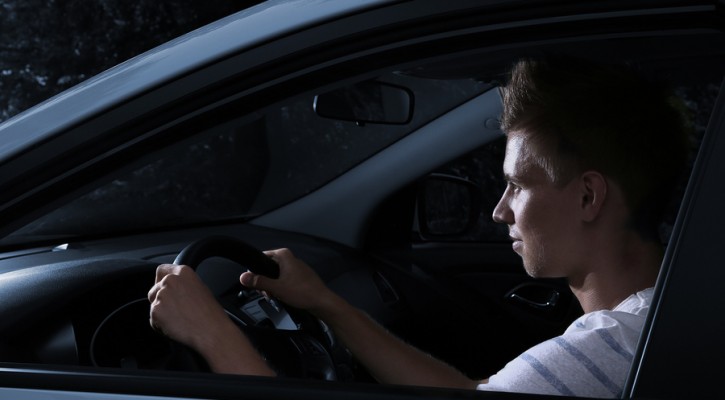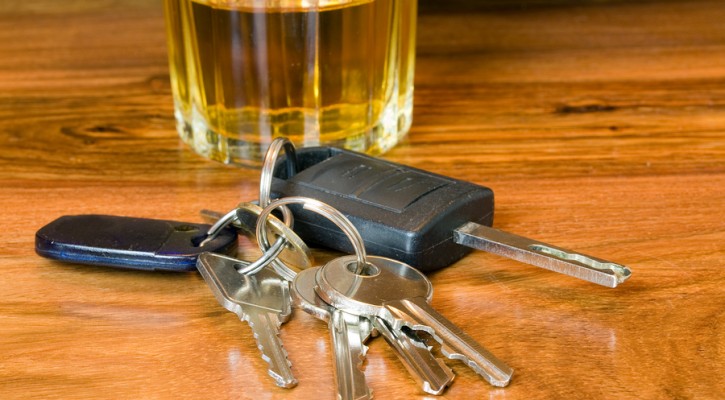
Five Worst Teen Driving Mistakes: Part Four
January 12, 2009
Most parents live in dread of the day their teens get a driver’s license and get behind the wheel alone. Their concerns are well-founded, since teen drivers have the highest death rates in car crashes of any age group. Motor vehicle crashes are the number one cause of death among Americans aged 15-20. But parents can help their teens be a safer driver even after they are licensed, particularly by paying attention to common risk factors.
In this five-part series, we’ll discuss the five worst teen driving mistakes:
- They don’t wear safety belts.
- They drink and drive.
- They panic/overcorrect in emergency situations.
- They drive too fast for conditions.
- They ride with other teens.
In this, part four of the series, we’ll discuss a frequent cause of collisions for teen drivers – driving too fast for conditions. In addition to succumbing to the lure of speeding on a straight, dry road, teens often fail to lower their speeds on hazardous roads or in dangerous weather conditions. They may compensate for heavy traffic by weaving in and out of traffic and braking more frequently instead of simply reducing speed.
Higher speeds reduce maneuverability, increase stopping distances, and decrease reaction time. Problems caused by increased speed are often magnified in adverse conditions, such as poor visibility or on wet or snowy roads. Teach your teen to be prepared to adjust speed for varying conditions and situations. Different traffic, roadway, and weather conditions can change the amount of time and space needed for slowing down while maintaining control of the vehicle.
Be sure to let your teen practice driving with you in the passenger seat in a variety of road and weather conditions, even after your teen has a driver’s license. Ask your teen to identify the roadway surfaces and conditions at the beginning of each lesson. If the weather changes while you are driving, be sure your teen responds appropriately. For example, if it is sunny when you start out but begins raining during your drive, make sure your teen reduces speed to accommodate the slippery road surface.
Make sure your teen maintains an appropriate following distance at all times. Check your driver handbook for the recommended following distance in your state. Teach your teen to add seconds to the minimum following distance for poor road conditions, bad weather, poor visibility such as in darkness or fog, or in any area where additional hazards are present.
Review the following points about speed with your teen:
- Speeding reduces a driver’s ability to steer safely around curves on the highway or avoid objects in the roadway.
- Speeding extends the distance necessary to stop the vehicle, increases the distance a vehicle travels while a driver reacts, and reduces the effectiveness of the vehicle’s safety features.
- The faster the vehicle is traveling, the greater the impact if the vehicle does crash. Inversely, the effectiveness of restraint devices like airbags and safety belts and vehicular construction features such as crumple zones and side member beams decline as impact speed increases.
- The probability of a disfiguring or debilitating injury or death increases with higher speed on impact.
- The economic cost to society of speeding-related crashes is estimated by the National Highway Traffic Safety Administration to be 40.4 billion dollars per year.
Make sure your home driver education program is complete; use a Driving Log to keep track of your teen’s progress.
Five Worst Teen Driving Mistakes: Part One
Five Worst Teen Driving Mistakes: Part Two
Five Worst Teen Driving Mistakes: Part Three
Five Worst Teen Driving Mistakes: Part Three
January 7, 2009
Most parents live in dread of the day their teens get a driver’s license and get behind the wheel alone. Their concerns are well-founded, since teen drivers have the highest death rates in car crashes of any age group. Motor vehicle crashes are the number one cause of death among Americans aged 15-20. But parents can help their teens be a safer driver even after they are licensed, particularly by paying attention to common risk factors. In this five-part series, we’ll discuss the five worst teen driving mistakes:
- They don’t wear safety belts.
- They drink and drive.
- They panic/overcorrect in emergency situations.
- They drive too fast for conditions.
- They ride with other teens.
In this, part three of the series, we’ll discuss the difficulty teens have in responding properly to emergency situations. Teens often panic in emergency situations because they have neither the training nor the experience to execute the correct maneuver quickly enough to avoid a crash. They may take no action at all, take too long to react, or overcorrect – which could even make the situation worse.
In a driving emergency, a driver can stop or accelerate, with or without an accompanying turn. Most drivers who act out of panic will simply stop. They may skid to a stop, stop without considering the type of brakes on the vehicle (standard or anti-lock), or slam on the brakes when a more controlled stop is possible. If they try to turn, it is likely to be an uncontrolled turn and is often an overcorrection given the situation. For example, when the right wheels are off the pavement, a panicked driver will quickly yank the steering wheel to the left without slowing down, which could cause a rollover in some vehicles.
Be sure to review the following information with your teen as part of your home driver training program.
Most new vehicles have ABS (Anti-lock Braking System), which allows drivers to stop without skidding. In general, if you need to stop quickly with ABS, press on the brake pedal as hard as you can and keep pressing on it. You might feel the brake pedal pushing back when the ABS is working. Do not let up on the brake pedal. The ABS system will only work with the brake pedal pushed down.
Without ABS, you can cause the vehicle to go into a skid if you brake too hard. Apply the brakes as hard as you can without locking them. If the brakes lock up, you will feel the vehicle start to skid. Quickly let up on the brake pedal. As soon as the vehicle stops skidding, push down on the brake pedal again. Keep doing this until the vehicle has stopped.
In most cases, you can turn the vehicle quicker than you can stop it. You should consider turning in order to avoid a collision. Make sure you have a good grip with both hands on the steering wheel. Once you have turned away or changed lanes, you must be ready to keep the vehicle under control. Some drivers steer away from one collision only to end up in another. Always steer in the direction you want the vehicle to go.
One aspect of having ABS is that you can turn your vehicle while braking without skidding. This is very helpful if you must turn or stop or slow down.
If you do not have ABS, you must use a different procedure to turn quickly. Step on the brake pedal, but then let up and turn the steering wheel. Braking will slow the vehicle some, and it puts more weight on the front tires and this allows for a quicker turn. Do not lock up the front wheels while braking or turn so sharply that the vehicle can only plow ahead.
Another consideration is that generally it is better to run off the road than to crash head-on into another vehicle.
Sometimes it is best or necessary to speed up to avoid a collision. This may happen when another vehicle is about to hit you from the side or from behind and there is room to the front of you to get out of danger. Be sure to slow down once the danger has passed.
Will your teen understand, retain and use the information in the driver handbook, or just memorize enough to pass the test? You can support your teen’s learning and retention of the driver handbook with a new driver prep course. Have your teen start with a Free DMV Practice Test today.
Five Worst Teen Driving Mistakes: Part One
Five Worst Teen Driving Mistakes: Part Two

Why You Should Take a Drug and Alcohol Course: A Note about Marijuana and Driving
January 5, 2009
Of course, a Florida drug and alcohol course is mandatory; you’ll have to take it so you can get your driver’s permit. But a certificate isn’t the only thing you should take away from the class – the knowledge you gain could one day save your life.
Drinking alcohol and driving gets a lot of attention, both in driver’s education courses and in the media, and it should; many teens die in alcohol-related crashes each year. But some teens forget about or ignore the effects of illegal drugs on driving, particularly with drugs that are incorrectly perceived to be harmless, like marijuana. But marijuana, whether used alone or in combination with alcohol, is anything but harmless for any driver.
By far, marijuana remains the most widely used illegal drug among teens. The main active chemical in marijuana is THC (delta-9-tetrahydrocannabinol). Short-term effects of marijuana use include problems with memory and learning, distorted perception, difficulty in thinking and problem-solving, loss of coordination, and increased heart rate, anxiety, and panic attacks.
After alcohol, marijuana is the substance most frequently found in fatal automobile crashes. Even a moderate dose of marijuana can impair driving performance. Alcohol and marijuana are also often found together, resulting in a dramatic spike in impairment levels and decreased driving performance. The effects of a low dose of marijuana combined with alcohol are much greater than for either drug alone.
Combining any two drugs, or a drug with alcohol, may result in the synergistic effect. This means that the combination of drugs produces effects that are greater than the sum of the effects of the two drugs. This is called an additive effect; instead of a 1 + 1 = 2 result, the synergistic effect may cause a 1 + 1 = 3 result.
Remember, any drug that affects your safe driving can mean a DUI – or worse.
Getting your Florida learner’s permit requires certain steps. Here is a useful Learners Permit checklist to get you started.

Five Worst Teen Driving Mistakes: Part Two
December 19, 2008
Most parents live in dread of the day their teens get driver’s licenses and get behind the wheel on their own. Their concerns are well-founded, since teen drivers have the highest death rates in car crashes of any age group. Motor vehicle crashes are the number one cause of death among Americans aged 15-20. But parents can help their teens be a safer driver even after they are licensed, particularly by paying attention to common risk factors. In this five-part series, we’ll discuss the five worst teen driving mistakes:
- They don’t wear safety belts.
- They drink and drive.
- They panic/overcorrect in emergency situations.
- They drive too fast for conditions.
- They ride with other teens.
In this, part two of the series, we’ll discuss the risk teens take by driving after drinking alcohol. Teens are at far greater risk of death in an alcohol-related crash than the overall population, despite the fact they cannot legally purchase or publicly possess alcohol in any state. (National Highway Traffic Safety Administration)
Did you know?
- During 2006, 7,643 15- to 20-year-old drivers and motorcycle operators were involved in fatal traffic crashes across the nation, 1,377 (18 percent) of whom had a blood alcohol concentration (BAC) of .08 or higher.
- Nationally, 64 percent of all drivers or motorcycle operators ages 15 to 20 who were involved in fatal traffic crashes and had a BAC of .08 or higher died as a result of the crash.
- Violators of underage drinking laws often face a trip to jail, the loss of their driver’s license, and dozens of other unanticipated expenses including attorney fees, court costs, and other fines. Plus, there is the added embarrassment, humiliation, and potential loss and consequence related to academic eligibility, college acceptance, scholarship awards, and more.
- Most of those killed in alcohol-related crashes involving teen drivers are the young drivers themselves and their passengers.
All states now enforce a minimum drinking age of 21. Nevertheless, alcohol related crashes are still a top safety problem. Make sure your teen understands:
- Alcohol is not actually digested; it’s processed. It’s absorbed directly through the lining of the stomach into the bloodstream. This is why the body feels the effect so quickly.
- Alcohol has its first and greatest effect on the parts of the brain that control judgment and reasoning, the most critical skills needed by drivers. Physical abilities become impaired soon after.
- As more alcohol enters the bloodstream, the area of the brain that controls muscular movements and body control begins to slow down. Even after the driver recognizes danger, the brain takes longer than normal to process the information and react to the danger. Messages the brain sends to different parts of the body might become confused.
- A driver affected by alcohol has a decreased ability to reason clearly and to make sound judgments. However, the driver may feel as though thinking and judging abilities are sharper and quicker than usual.
- Alcohol quickly diminishes the ability to concentrate. A decrease in the ability to concentrate greatly increases a driver’s level of risk. A person’s driving ability can be reduced after only one drink.
- The muscular reactions of a driver who has been drinking can become slow and clumsy. Steering and braking movements can become uncoordinated. The driver might over-steer, brake late or not brake at all. The driver might not be able to negotiate turns properly and safely. Such actions cause drinking drivers to be involved in serious crashes.
Make sure your teen knows that she or he can always call you for a ride, whether the teen is intoxicated or is faced with the prospect of riding with a driver who has been drinking. Make a pact in which you promise to pick up your teen without questions or lectures. You can have a discussion about the issue the following day, when you are calmer and your teen is safe at home.
Teen Drivers and Prescription Drugs
December 17, 2008
Usually, when people think about getting arrested for Driving Under the Influence (DUI), they think of alcohol. But in Florida, you can be arrested for driving under the influence of any substance that affects your driving. And it’s not too difficult to find substances that do – even legal ones.
Did you know?
- Taking sedating antidepressants even 10 hours before driving is equal to driving impaired.
- Ten mg of Valium can cause greater driving impairment than an alcohol concentration of 0.10.
- Even in the prescribed dose, the side effects of a prescription drug are beyond your control.
- More than 150 medications interact harmfully with alcohol.
- Overdosing on a narcotic could cause a person’s breathing to slow down or stop and could cause death.
Narcotics are the most widely used prescription pain relievers. Narcotics are drugs that relieve pain and cause drowsiness or sleep. Side effects of narcotics include:
- drowsiness
- dizziness
- nausea and vomiting
- confusion
- decrease in rate and depth of breathing
Some drugs, such as the stimulants used to treat ADHD, may make you feel alert and confident when you’re driving. In reality, the situation may be quite different. Drugs can fool you into believing you’re in control of your driving when you are, in fact, impaired.
Some antihistamines (used to treat allergies) are available over-the-counter, but others are only available with a doctor’s prescription. The effects of antihistamines include:
- drowsiness – the most common side effect
- dizziness
- poor coordination
- restlessness
- nervousness
- confusion
- blurred vision
- slowed respiration
Tranquilizers are prescription drugs that are used to treat medical conditions such as severe anxiety, stress disorders and muscle tension. Tranquilizers are depressants. This means they reduce the amount of activity in the brain and central nervous system. Tranquilizers can relax people to the point where they get clumsy and have trouble thinking straight. Exceeding the prescribed dose of tranquilizers can cause problems with thinking, memory and judgment.
Driving skills can also be impaired by other medications, such as codeine, which is found in prescription cough medication. When combined with alcohol, the adverse effects of these medications on driving skills get worse. The same is true of some antidepressants, most antihistamines, certain cardiovascular medications, narcotics, tranquilizers, and some anti-psychotic medications.
Never drink alcohol while you are taking other drugs. Mixing alcohol with certain medications can cause:
- nausea and vomiting
- headaches
- drowsiness
- fainting
- internal bleeding
- loss of coordination
- heart problems
- breathing difficulties
- death
Combining any two drugs, or a drug with alcohol, may result in the synergistic effect. This means that the combination of drugs produces effects that are greater than the sum of the effects of the two drugs. This is called an additive effect; instead of a 1 + 1 = 2 result, the synergistic effect may cause a 1 + 1 = 3 result. Even small doses might cause problems. These drug interactions may result in unconsciousness and death.
Always follow label instructions and the advice of your pharmacist or doctor. But err on the side of caution – if you don’t think the drug should affect your driving but you just don’t feel well, don’t drive.
Read more about how to avoid getting a DUI from over-the-counter or prescription drugs.
